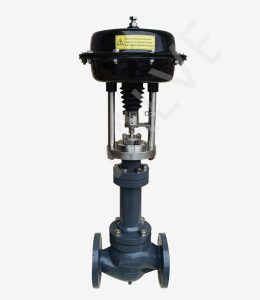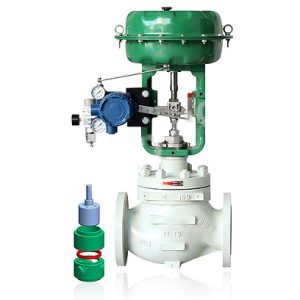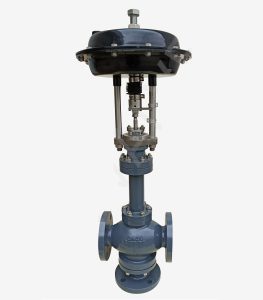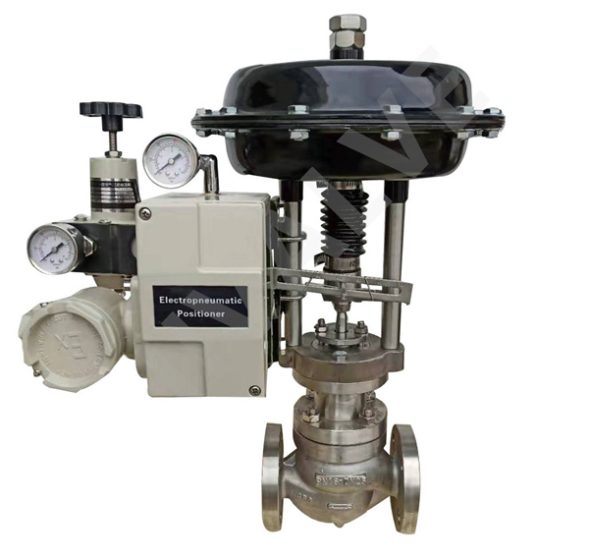Steam valves play a critical role in industrial systems, managing the movement and pressure of steam to ensure both safety and efficiency. A steam valve, such as a Steam Control Valve, regulates steam flow within various processes, maintaining precise control over system operations. Devices like the steam flow control valve are designed to adjust the flow rate based on operational requirements, while specialized components, such as the steam pressure reducing valve and steam pressure regulating valve, are used to manage and stabilize pressure within acceptable limits. By understanding how these valves operate, industries can optimize performance, prevent hazards, and extend their system’s lifespan. This introduction sets the stage for a closer look at the mechanisms and applications of steam valves.
Introduction steam valve
Steam valves are essential components in industrial systems, designed to control the flow, pressure, and temperature of steam for safe and efficient operations. They serve a variety of roles, from maintaining stable conditions to optimizing system performance. Pressure regulating valve manufacturers emphasize the importance of precise steam control to avoid operational hazards. Key types of valves, such as the Pneumatic diaphragm control valve and Pneumatic globe valve, deliver advanced regulation for specific processes, ensuring reliability and accuracy in steam management. Additionally, devices like the temperature regulating valve play a critical role in maintaining desired thermal levels, ensuring system integrity. Understanding the function and variety of steam valves is fundamental to achieving efficiency and safety across industries.
Brief overview of what a steam valve is and its role in controlling steam flow.
A steam valve is a critical component in industrial systems, designed to control and regulate the flow of steam. By managing the movement, pressure, and volume of steam, these valves ensure system safety, efficiency, and reliability. Steam valves are essential in preventing pressure imbalances and protecting equipment from potential damage caused by uncontrolled flow. Common types, such as globe valves, gate valves, and pressure-reducing valves, serve specific purposes based on operational needs. For instance, they are widely used in power plants, chemical processing, and heating systems to maintain optimal steam conditions. Understanding their function is key to ensuring smooth industrial operations and minimizing risks.
Importance of steam valves in various industrial processes, emphasizing safety, efficiency, and precision.
Steam valves are vital in industrial processes, ensuring safety, efficiency, and precise control of steam flow and pressure. These valves protect equipment and workers by preventing pressure surges and uncontrolled steam release, mitigating potential hazards. They enhance operational efficiency by optimizing steam distribution, conserving energy, and reducing waste. Precision is key in processes like power generation and chemical manufacturing, where consistent steam flow and pressure are crucial for high-quality outputs. Whether regulating temperature in manufacturing or controlling pressure in power plants, steam valves play an integral role in maintaining smooth, safe, and efficient industrial operations, making them indispensable in modern industries.

Key Components of a Steam Valve
A steam valve consists of several key components that work together to regulate steam flow and pressure effectively. The valve body serves as the main structure, housing internal parts and forming the flow passage. The actuator is responsible for the movement of the valve, converting energy into precise adjustments to control steam flow. The control mechanism, often including stems, discs, and seats, ensures accurate regulation by responding to system demands. These components function in harmony to maintain optimal steam conditions, enabling safe and efficient operation across industrial applications. Their design ensures reliability, protecting equipment and enhancing overall system performance.
Explanation of essential parts, such as the body, bonnet, stem, and seat.
The essential parts of a steam valve include the body, bonnet, stem, and seat, each playing a critical role in its operation. The valve body serves as the outer casing, providing structural stability and housing the internal components. The bonnet acts as a cover, sealing the valve body and protecting the internal mechanisms from external contaminants. The stem connects the actuator to the internal control elements, transmitting motion to open or close the valve. Lastly, the seat ensures a tight seal when the valve is closed, preventing leaks. Together, these components enable precise control of steam flow and pressure, ensuring efficient and safe system performance.
Description of the actuation mechanism (manual, pneumatic, or electric).
Steam valves use different actuation mechanisms—manual, pneumatic, and electric—to control steam flow and pressure. Manual actuation relies on a handwheel or lever, offering simplicity and cost-effectiveness, but it’s labor-intensive and less precise. Pneumatic mechanisms use air pressure to move the valve, ensuring faster and more accurate adjustments, making them ideal for automated and high-demand settings. Electric actuators, powered by motors, provide precise, remote operation and are well-suited for systems requiring detailed control and monitoring. Each actuation type serves distinct purposes, with manual mechanisms best for simple operations and pneumatic or electric actuation excelling in complex industrial environments.
Materials commonly used in steam valves to handle high pressure and temperature.
Steam valves use different actuation mechanisms—manual, pneumatic, and electric—to control steam flow and pressure. Manual actuation relies on a handwheel or lever, offering simplicity and cost-effectiveness, but it’s labor-intensive and less precise. Pneumatic mechanisms use air pressure to move the valve, ensuring faster and more accurate adjustments, making them ideal for automated and high-demand settings. Electric actuators, powered by motors, provide precise, remote operation and are well-suited for systems requiring detailed control and monitoring. Each actuation type serves distinct purposes, with manual mechanisms best for simple operations and pneumatic or electric actuation excelling in complex industrial environments.
How a Steam Valve Operates
A steam valve operates by regulating steam flow and pressure within industrial systems, ensuring precise control and efficiency. The actuator initiates the operation, using manual, pneumatic, or electric mechanisms to transmit force to the stem. The stem, in turn, moves the internal control elements, such as the disc or plug, to adjust the valve’s opening. The seat provides a tight seal when the valve is closed, preventing leaks and maintaining system integrity. By carefully controlling steam distribution, steam valves manage pressure levels, optimize energy use, and protect system components, making them essential for safe and reliable industrial operations.
Discussion of how steam enters and exits the valve.
Steam enters a steam valve through the inlet port, where its flow is directed into the valve’s internal chamber. Inside, components like the disc or plug play a crucial role in regulating this flow by controlling the open or closed position of the valve. When partially or fully opened, the steam passes through the valve body and exits via the outlet port. The design of the valve, including precision-engineered flow paths, ensures smooth steam transition while maintaining control over pressure and velocity. This efficient flow management is vital for optimizing performance and ensuring the safety of industrial steam systems.

Detailed breakdown of the flow control process, including how the valve’s internal components regulate steam pressure and volume.
Within a steam valve, the flow control process hinges on the precise interaction of internal components like the disc, plug, and seat. The disc or plug adjusts its position within the valve body to regulate the opening size, controlling the volume of steam allowed to pass through. The seat ensures an airtight seal when the valve is closed, preventing leaks and maintaining pressure stability. By modulating the distance between the disc and seat, the valve adjusts steam pressure and flow rate. This precise control safeguards system efficiency and optimizes steam distribution across industrial applications, even under demanding operating conditions.
Explanation of pressure differentials and throttling.
Pressure differentials and throttling are critical to the operation of steam valves, enabling precise steam flow and pressure control. A pressure differential is created when high-pressure steam enters the valve and flows toward the lower-pressure outlet. By partially closing the valve, throttling reduces the flow area, regulating steam velocity and pressure to the desired levels. This process helps manage energy distribution and prevent system overpressure, ensuring safe operation. Steam valves leverage throttling to maintain consistent performance and adapt to fluctuating demand in industrial environments, optimizing efficiency while protecting connected equipment and infrastructure from undue stress.
Types of Steam Valves
Steam valves come in various types, each tailored to specific industrial needs. Gate valves are ideal for fully open or closed positions, providing minimal flow resistance. Globe valves offer fine control of steam flow and pressure, making them well-suited for throttling applications. Ball valves, known for their quick operation and tight sealing, work efficiently in high-pressure systems. Butterfly valves are lightweight and compact, designed for regulating large volumes of steam with minimal pressure drop. Each valve type serves unique purposes, ensuring reliable performance across diverse industrial conditions while meeting the demands of steam system management effectively and efficiently.
Applications of Steam Valves
Steam valves play a vital role in numerous industries, including power generation, chemical processing, and manufacturing. They regulate steam flow and pressure to ensure safe and efficient operations. For instance, in power plants, steam valves control the flow to turbines, optimizing energy conversion. Within chemical plants, they manage steam distribution for reactors and heat exchangers, ensuring precise temperature control in critical processes. Manufacturing facilities rely on steam valves for process heating systems, such as boilers and sterilizers, to maintain consistent performance. These valves are essential components, safeguarding operational stability and enabling the efficient use of energy across industrial applications.
Maintenance and Troubleshooting
Regular maintenance is crucial for the optimal performance and longevity of steam valves. Routine inspections help identify common issues like leaks, corrosion, and wear on internal components such as the disc or seat. Early detection of these problems prevents escalating damage and operational disruptions. Addressing leaks may involve tightening connections or replacing seals, while corrosion might require cleaning or applying protective coatings. Worn parts should be promptly replaced to maintain efficient flow control. A proactive approach, including scheduled maintenance and timely repairs, ensures steam valves operate safely and reliably, safeguarding industrial systems and minimizing costly downtime.
Advantages of Properly Functioning Steam Valves
Properly functioning steam valves offer numerous advantages, including improved safety, enhanced efficiency, and reduced energy consumption. By ensuring precise control of steam flow and pressure, these valves prevent leaks and minimize energy waste, leading to significant cost savings. Their reliable operation protects connected equipment from undue stress, prolonging its lifespan and reducing maintenance expenses. Additionally, well-maintained steam valves optimize system performance, supporting consistent and stable operations in demanding industrial environments. With their ability to manage steam distribution effectively, these valves are indispensable in maintaining safety standards and maximizing productivity across applications such as power generation, chemical processing, and manufacturing.

FAQ steam valve
Q1: What is the role of an electric globe valve in a steam valve system?
A1: An electric globe valve is a type of steam valve used to precisely control steam flow and pressure in industrial systems. It uses an electric motor to adjust the valve’s position, offering fine regulation for applications requiring consistent and reliable performance. These valves are essential in processes like temperature control in heat exchangers or managing steam flow in power generation systems, where accuracy and automation are critical.
Q2: How does a pneumatic control valve function in steam valve applications?
A2: A pneumatic control valve utilizes compressed air to adjust the valve’s position and manage the flow and pressure of steam. This type of steam valve is preferred in environments requiring fast and responsive operation, such as chemical processing or manufacturing plants. Its reliability in handling high temperatures and pressures makes it ideal for maintaining operational stability and system efficiency in demanding industrial systems.
Q3: What advantages does an electric control valve offer in steam valve systems?
A3: An electric control valve provides automated and precise control over steam flow and pressure. Driven by an electric actuator, it integrates seamlessly with control systems, enabling real-time adjustments based on operational requirements. This makes it particularly beneficial in industries like power generation and pharmaceuticals, where automated regulation ensures safety, energy efficiency, and process consistency. Its ability to adapt swiftly to changes enhances overall system performance while minimizing downtime.
Conclusion steam valve
Steam valves are crucial in industrial systems, managing steam flow and pressure to ensure safety, efficiency, and reliability. Devices such as the self-operated pressure regulating valve, self-operated regulating valve, and self-operated control valve provide precise, automated control without the need for external power sources. These valves safeguard operations by preventing pressure surges, optimizing energy use, and maintaining stable system conditions. Their ability to regulate steam distribution effectively reduces hazards, enhances equipment longevity, and ensures consistent performance. By incorporating these advanced solutions, industries can achieve optimal functionality, minimize downtime, and maintain high safety and operational standards in demanding environments.

